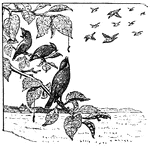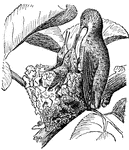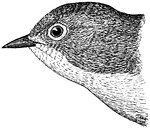
Nashville Warbler
The Nashville Warbler, Vermivora ruficapilla, is a small songbird in the New World warbler family. They…
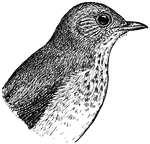
Wilson's Thrush
The Veery, Catharus fuscescens, is a small thrush species. It is occasionally called Willow Thrush or…

Wood Thrush
The Wood Thrush, Hylocichla mustelina, is a North American passerine bird. It is closely related to…

Tit Bird
The tits, chickadees, and titmice comprise Paridae, a large family of small passerine birds which occur…
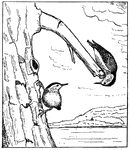
Nuthatches
The nuthatches are a genus, Sitta, of small passerine birds belonging to the family Sittidae. Characterised…

Brown Thrasher
The Brown Thrasher (Toxostoma rufum) is a species of thrasher, part of a family of New World birds (Mimidae)…
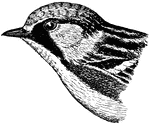
Chestnut-sided Warbler
The Chestnut-sided Warbler, Dendroica pensylvanica, is a New World warbler. They breed in eastern North…

American Redstart
The American Redstart, Setophaga ruticilla, is a New World warbler. They breed in North America, across…
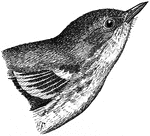
Pine Warbler
The Pine Warbler, Dendroica pinus, is a small songbird of the New World warbler family. These birds…
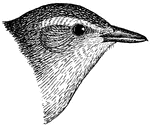
Warbling Vireo
The Warbling Vireo, Vireo gilvus, is a small songbird. Adults are 12 cm long and weigh 12 g. They are…
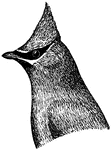
Cedar Waxwing
The Cedar Waxwing (Bombycilla cedrorum) is a member of the family Bombycillidae or waxwing family of…
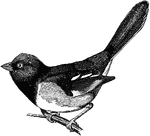
Towhee (Male)
A Towhee is any one of a number of species of birds in the genus Pipilo within the family Emberizidae…

Western Wood Pewee
The Western Wood-Pewee, Contopus sordidulus, is a small tyrant flycatcher. Adults are gray-olive on…
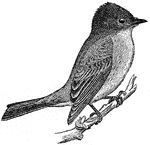
Phoebe
The genus Sayornis is a small group of medium-sized insect-eating birds in the Tyrant flycatcher family…
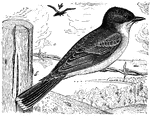
Kingbird
The genus Tyrannus is a group of large insect-eating birds in the Tyrant flycatcher family Tyrannidae.…
Woodpecker Tongue
An illustration of a woodpecker's tongue. The long sticky tongues, which possess bristles, aid these…
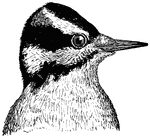
Hairy Woodpecker
The Hairy Woodpecker (Picoides villosus) is a medium-sized woodpecker. Their breeding habitat is forested…
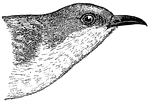
Black-billed Cuckoo
The Black-billed Cuckoo, Coccyzus erythropthalmus, is a cuckoo. Adults have a long brown tail and a…

American Robin
The American Robin, Turdus migratorius, is a migratory songbird of the thrush family. It is named after…

Bluebird
The bluebirds are medium-sized, mostly insectivorous or omnivorous birds in the genus Sialia of the…
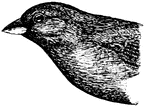
Indigobird (Male)
The Indigobirds and whydahs, are small passerine birds native to Africa. Some species are also known…
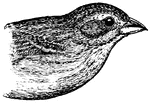
Indigobird (Female)
The Indigobirds and whydahs, are small passerine birds native to Africa. Some species are also known…
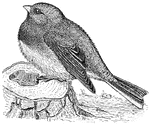
Junco
The Juncos, genus Junco, are small American sparrows. Their systematics are still very confusing after…
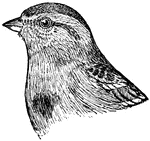
Tree Sparrow
The Tree Sparrow, Passer montanus, breeds over most of Europe and Siberia, and allied forms occur in…

White-throated Sparrow
The White-throated Sparrow, Zonotrichia albicollis, is a passerine bird of the American sparrow family…
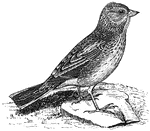
Vesper Sparrow
The Vesper Sparrow, Pooecetes gramineus, is a medium-sized sparrow. It is the only member of the genus…
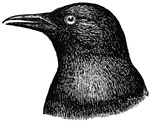
Crow
The true crows are large passerine birds that comprise the genus Corvus in the family Corvidae. Ranging…

Meadowlark
Meadowlarks are birds belonging to the genus Sturnella in the New World family Icteridae. This genus…
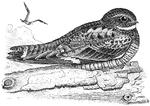
Nighthawk
Nighthawks are birds of the nightjar family in the New World subfamily Chordeilinae. They are medium-sized…
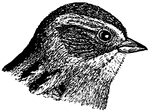
Swamp Sparrow
The Swamp Sparrow, Melospiza georgiana, is a medium-sized sparrow. Adults have streaked rusty and black…
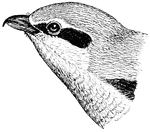
Great Grey Shrike
The Great Grey Shrike (Lanius excubitor) is a member of the shrike family. The Great Grey Shrike breeds…

Phoebe's Nest
An illustration of a Phoebe's nest in a box. The genus Sayornis is a small group of medium-sized insect-eating…
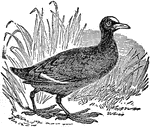
Coot
Coots , are medium-sized water birds which are members of the rail family Rallidae. They constitute…

Crane
Cranes are large, long-legged and long-necked birds of the order Gruiformes, and family Gruidae. Unlike…
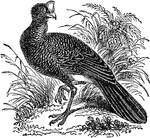
Curassow
Curassows are one of the three major groups of cracid birds. Three of the four genera are restricted…
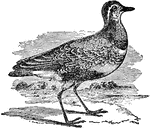
Plover
Plovers are a widely distributed group of wading birds belonging to the subfamily Charadriinae. They…

Sea Eagle
A sea eagle (also called erne or ern) is any of a group of birds of prey in the genus Haliaeetus in…
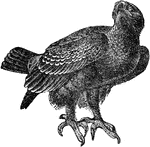
Screamer
The Screamers are a small family of birds, the Anhimidae.The three species occur only in South America,…
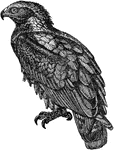
Golden Eagle
The Golden Eagle (Aquila chrysaetos) is one of the best known birds of prey in the Northern Hemisphere.…
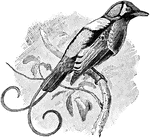
Wilson's Bird of Paradise
Cicinnurus respublica: a species of Bird of Paradise in the subgenus Diphyllodes.

Wildcat
The Wildcat (Felis silvestris), sometimes Wild Cat or Wild-cat, is a small felid native to Europe, the…

Rufous Scrub-Bird
The Rufous Scrub-Bird (Atrichornis rufescens) is a species of Australian birds in the Atrichornithidae…
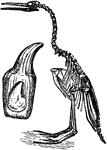
Hesperornis
Hesperornis is an extinct genus of flightless aquatic birds that lived during the Santonian to Campanian…
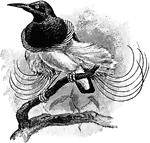
Twelve-Wired Bird of Paradise
The Twelve-Wired Bird of Paradise (Seleucidis melanoleucus) is a black and yellow bird of paradise named…

Wallace's Standardwing
Wallace's Standardwing (Semioptera wallacii) is a passerine bird in the family of Birds of Paradise.
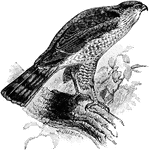
Sharp-Shinned Hawk
The adult female Sharp-Shinned Hawk (Accipiter striatus). The "Sharpie" is a small hawk in the Accipitridae…
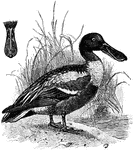
Northern Shoveler
The Northern Shoveler (Anas clypeata) is a common duck in the Anatidae family of water birds.
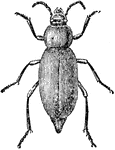
Darkling Beetle
Darkling beetles (also known as Darkening beetles) are a family of beetles found worldwide, estimated…
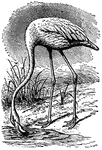
Flamingo
Flamingos are gregarious wading birds in the genus Phoenicopterus and family Phoenicopteridae. They…
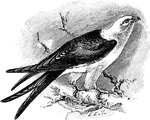
Swallow-Tailed Kite
The Swallow-Tailed Kite (Elanoides forficatus) is a large bird of the Accipitridae family of birds of…

Myrtle
The Myrtle (Myrtus) is a genus of one or two species of flowering plants in the family Myrtaceae, native…
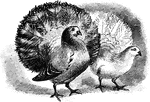
Two Fantail Pigeons
The Fantail is a popular breed of Fancy Pigeon which are domesticated varieties of the Rock Pigeon (Columba…

Footer with Cherub
Decorative floral tailpiece with a cherub and birds, used as an ornamental footer.

